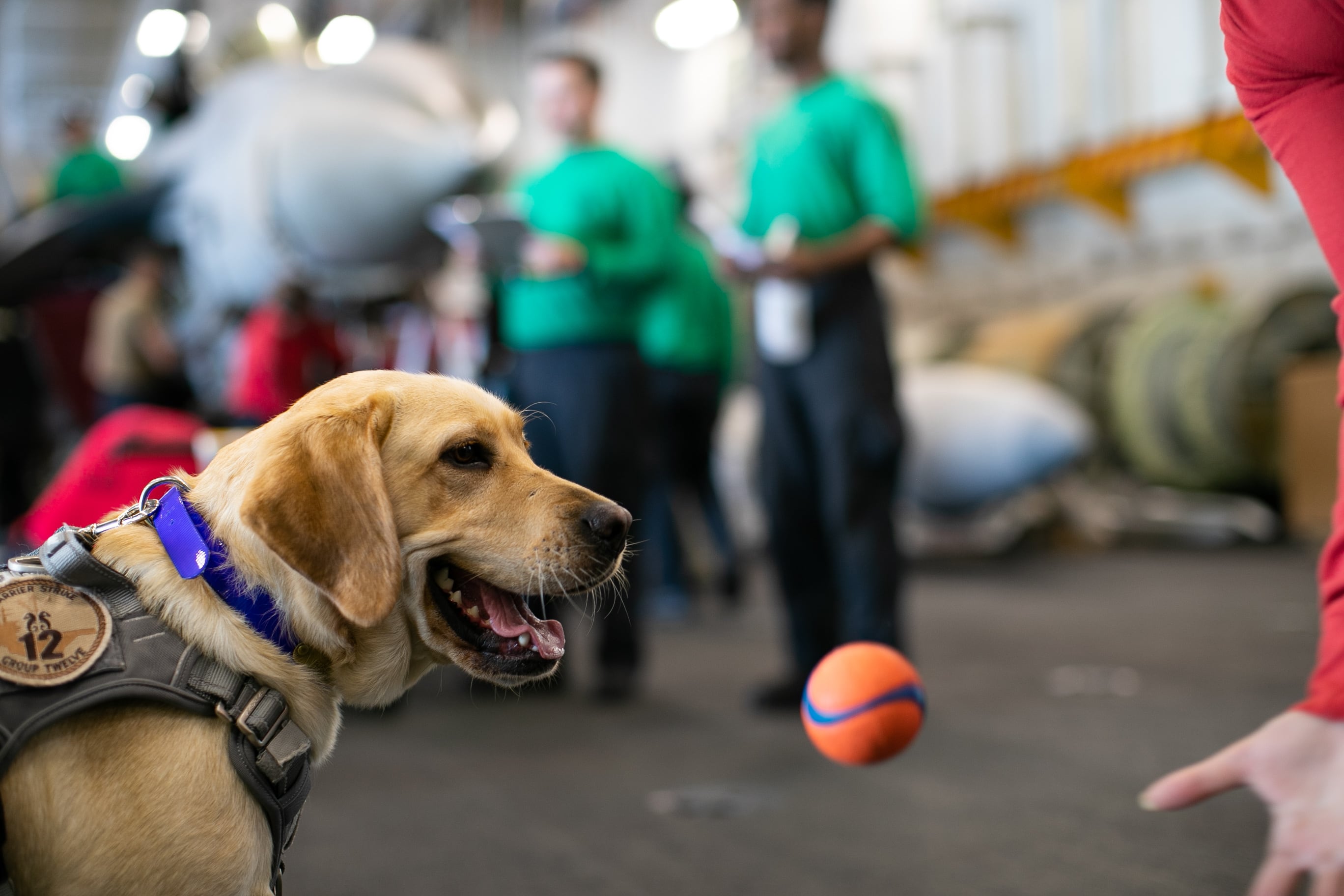Editor’s note: This story has been updated.
When the aircraft carrier Gerald R. Ford departed Naval Station Norfolk in May for its first combat deployment, the 23 new technologies installed on the warship weren’t the only novelty aboard the ship.
The voyage also marked the very first time an aircraft carrier deployed with a trained dog as part of a new pilot program the Navy is testing to improve morale and lessen the stigma sailors might feel about seeking mental healthcare.
Meet Sage, a yellow lab and very good girl who works with the Ford’s mental health and resiliency team.
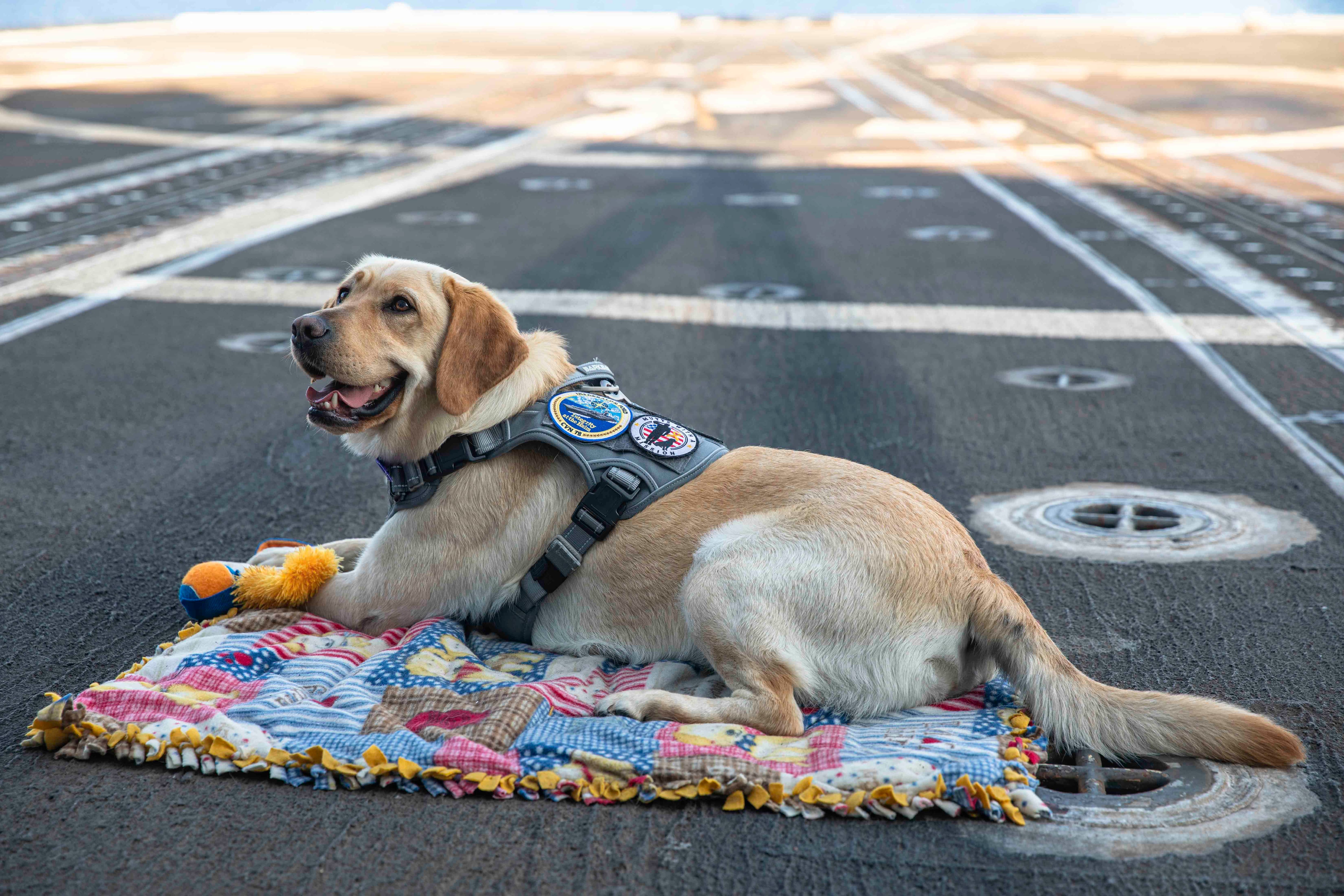
Formally known as the Navy’s Expanded Operational Stress Control Canine pilot program, Sage’s job is to help sailors cope and adjust to the mental and emotional stressors they face while underway.
Along the way, leaders hope a friendly pooch will attract crew members to events where they can learn more about available mental health options.
While the Navy says post-deployment analysis remains ongoing regarding Sage’s effect on the Ford’s crew, officials believe having her around bolstered unit cohesion and encouraged sailors to attend more events where she was present.
“Come for the dog, stay for the talk,” is how some Ford leaders put it, according to Naval Air Force Atlantic spokeswoman Lt. Cmdr. Dawn Stankus said.
Ford likely made a quality test bed, given that the green crew was on a maiden deployment that got extended several times following the Oct. 7 attack on Israel by the Palestinian militant group Hamas.
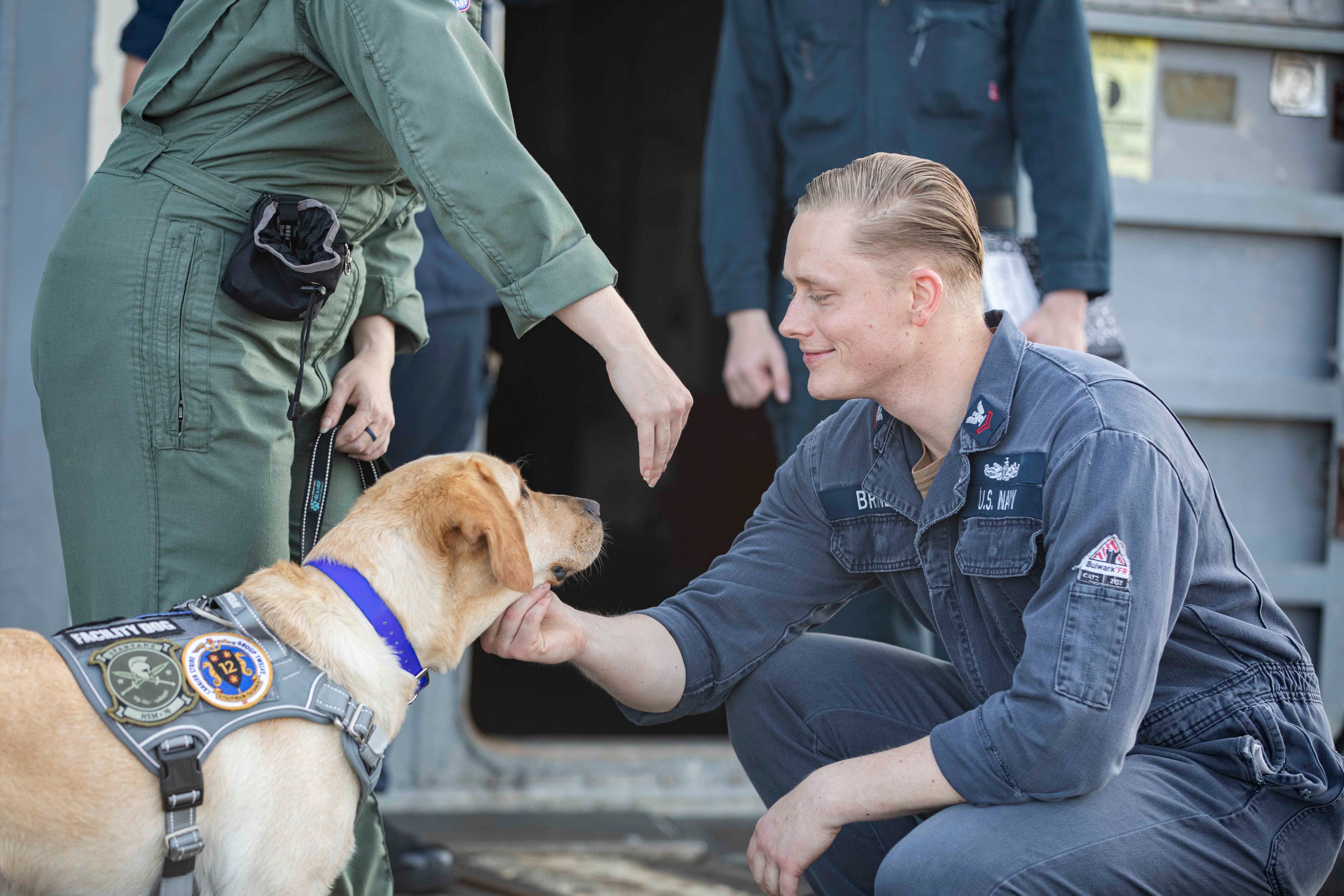
Despite the additional time at sea, the crew weathered the lengthy deployment well – thanks in part to Sage, her handlers and the onboard mental health providers, according to the Ford’s commanding officer, Capt. Rick Burgess.
“That whole team came together and we had a very resilient crew,” Burgess told Navy Times aboard the Ford in an exclusive interview in February. “Far more resilient than I think folks in the cheap seats will give them credit for.”
Another service dog, Demo, is currently deployed aboard the carrier Dwight D. Eisenhower in the Middle East, and another one, Ike, is expected to deploy with the amphibious assault ship Wasp later this year.
The pilot program sees these so-called “expeditionary facility” dogs participating in daily ship operations and events to offer support and comfort to sailors.
Meanwhile, the Navy is analyzing the effectiveness of the program to see if such pooches should become a permanent part of a deployed ships crew going forward.
The effort ties into a broader Navy effort to address mental health challenges, Stankus told Navy Times, and falls in step with initiatives laid out in the Navy’s “Mental Health Playbook” released last year that aims to promote better mental health conversations between commanders and their sailors, while reducing stigma.
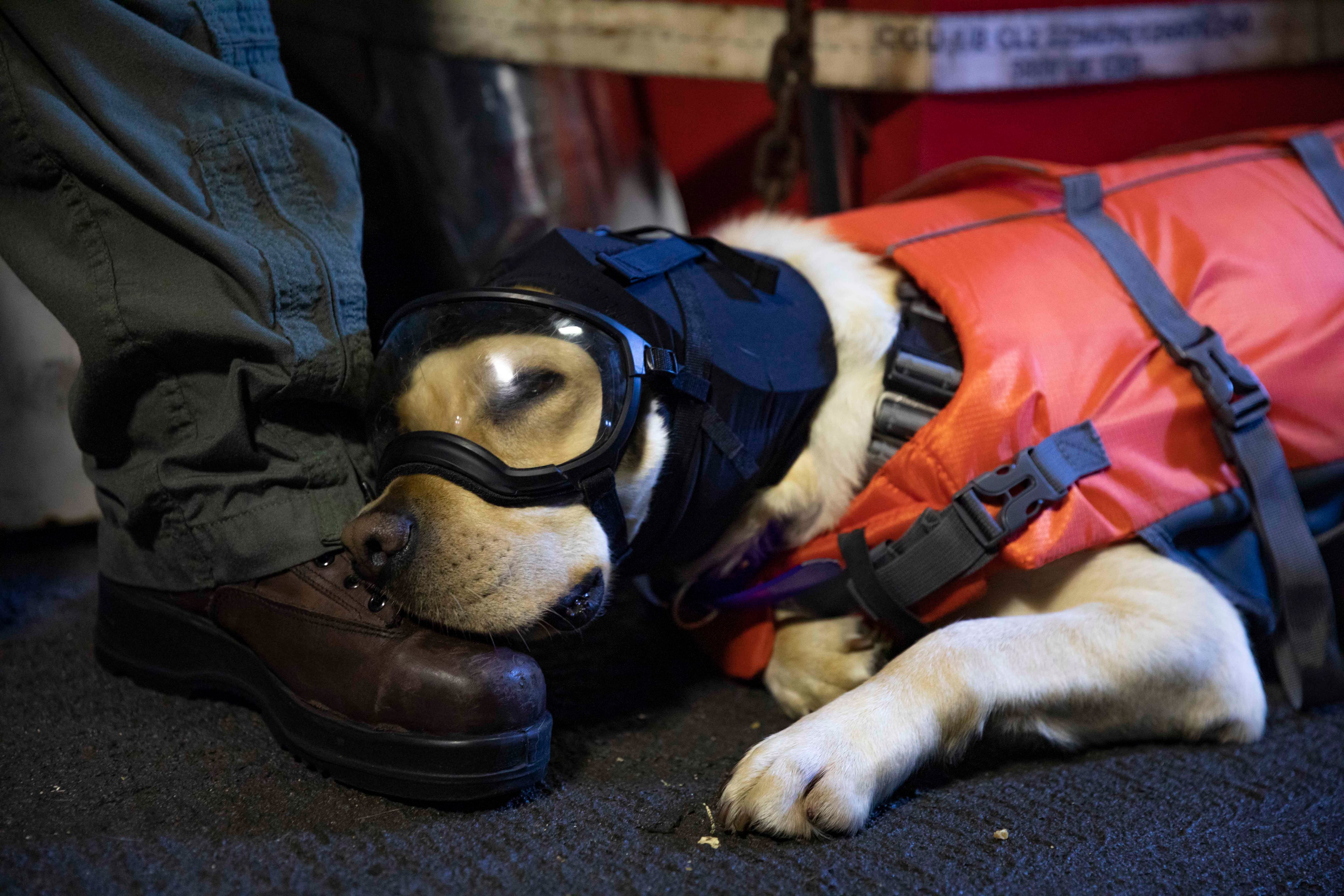
Although carrier dogs like Sage are not specifically mentioned in the playbook, the guide instructs leaders on how to assist their sailors in getting the care they need, so they can remain on the team.
That playbook also outlines guidance for connecting sailors with non-clinical mental health resources amid a nationwide shortage of mental health professionals, and officials say Sage helped break down barriers sailors may have to seeking help.
“Sailors are coming to more warrior toughness events and improving their morale through the vast network of resiliency resources the ship offers with Sage now present at these opportunities,” Cmdr. Genevieve Clark, the chaplain for the Gerald R. Ford Carrier Strike Group, said in a Navy news release in May.
Currently, the pilot program only applies to large deck amphibious ships and aircraft carriers, Stankus said, but Sage and her brethren do fly out to other ships in the strike group.
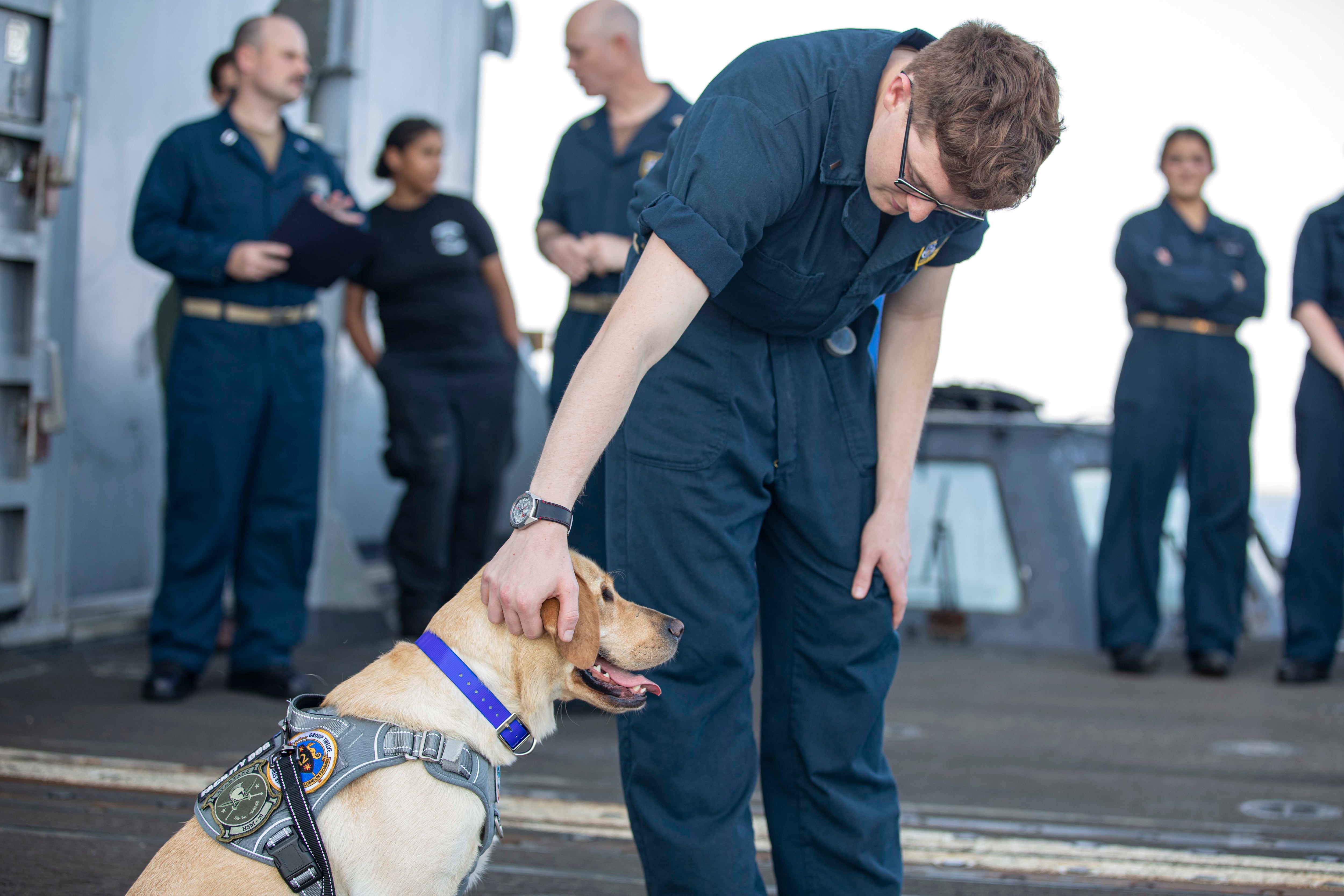
Before Sage or Demo came aboard, each ship must first identify a primary handler and at least three backup handlers who are selected based on their ability and interest in undergoing the 120-hour training process to work with the dogs.
These handlers are primarily chaplains, resiliency providers, and mental health professionals aboard the ships.
This education involves working onsite with the Virginia-based non-profit organization Mutts with a Mission, and time aboard the ship to get up to speed on how to properly care for the dogs, as well as how to track their behavior and body language, Stankus said.
Qualified handlers must become certified in canine CPR and first aid. They also undergo training on how to navigate a warship with a dog in tow.
“The handlers must undergo ladder well and helicopter training, so that they can guide their assigned canine throughout the ship,” Stankus said.
Clark completed the appropriate training to serve as Sage’s primary handler during the Ford’s deployment. Mutts with a Mission provided the ship with proper bedding for Sage, who stays in Clark’s quarters.
Pee pads were deployed for when Sage felt a call of nature.
As for exercise, Stankus said Sage received a “good amount of exercise” running up and down ladder wells and playing with sailors.
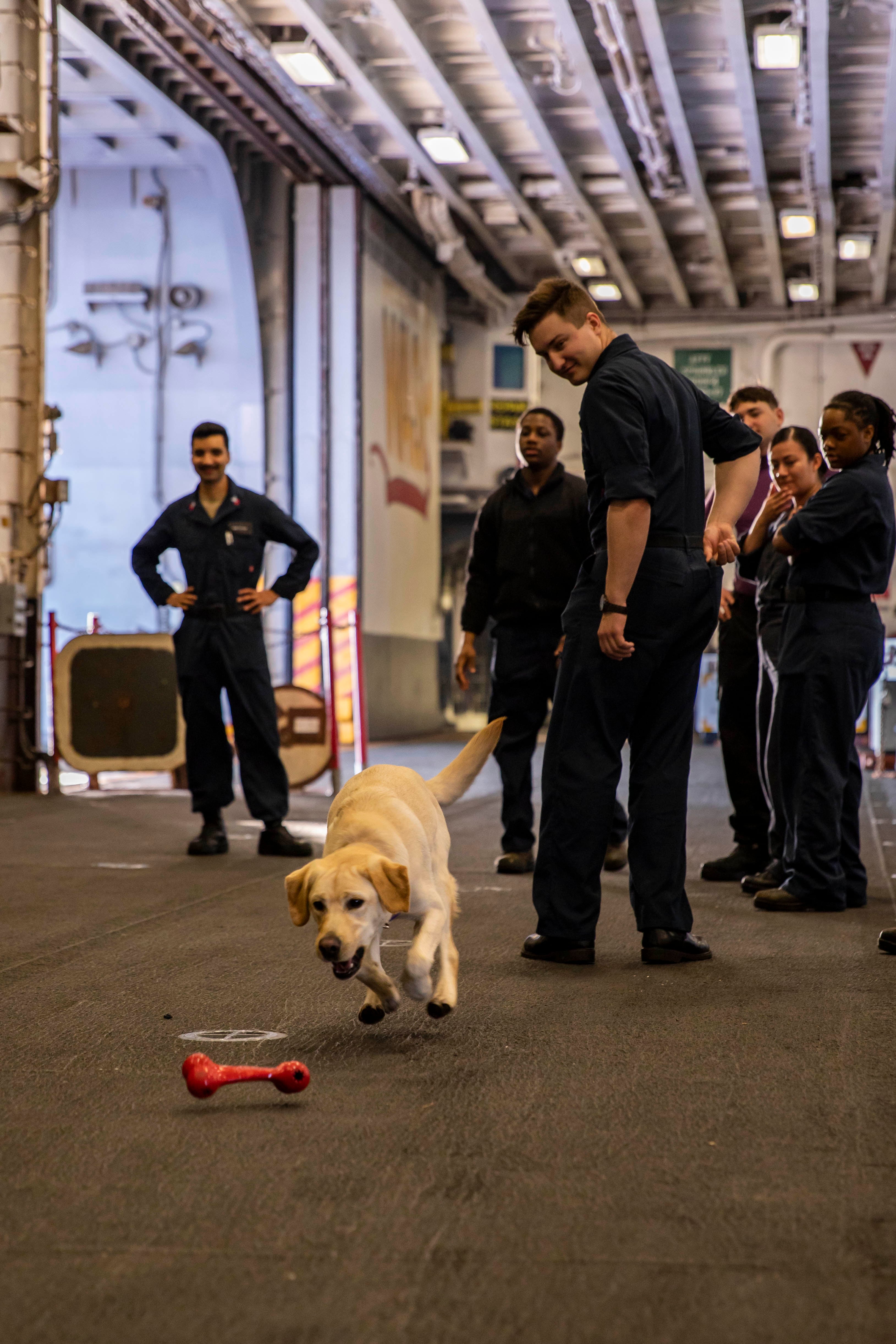
Ruff day? Pet Sage
Like her two-legged shipmates, Sage’s joining the fleet was a long time coming.
Mutts with a Mission spent three years teaching Sage to live and work aboard a ship.
According to the group, which trains service dogs for veterans and law enforcement, dogs like sage undergo “rigorous physical and temperamental testing prior to selection.”
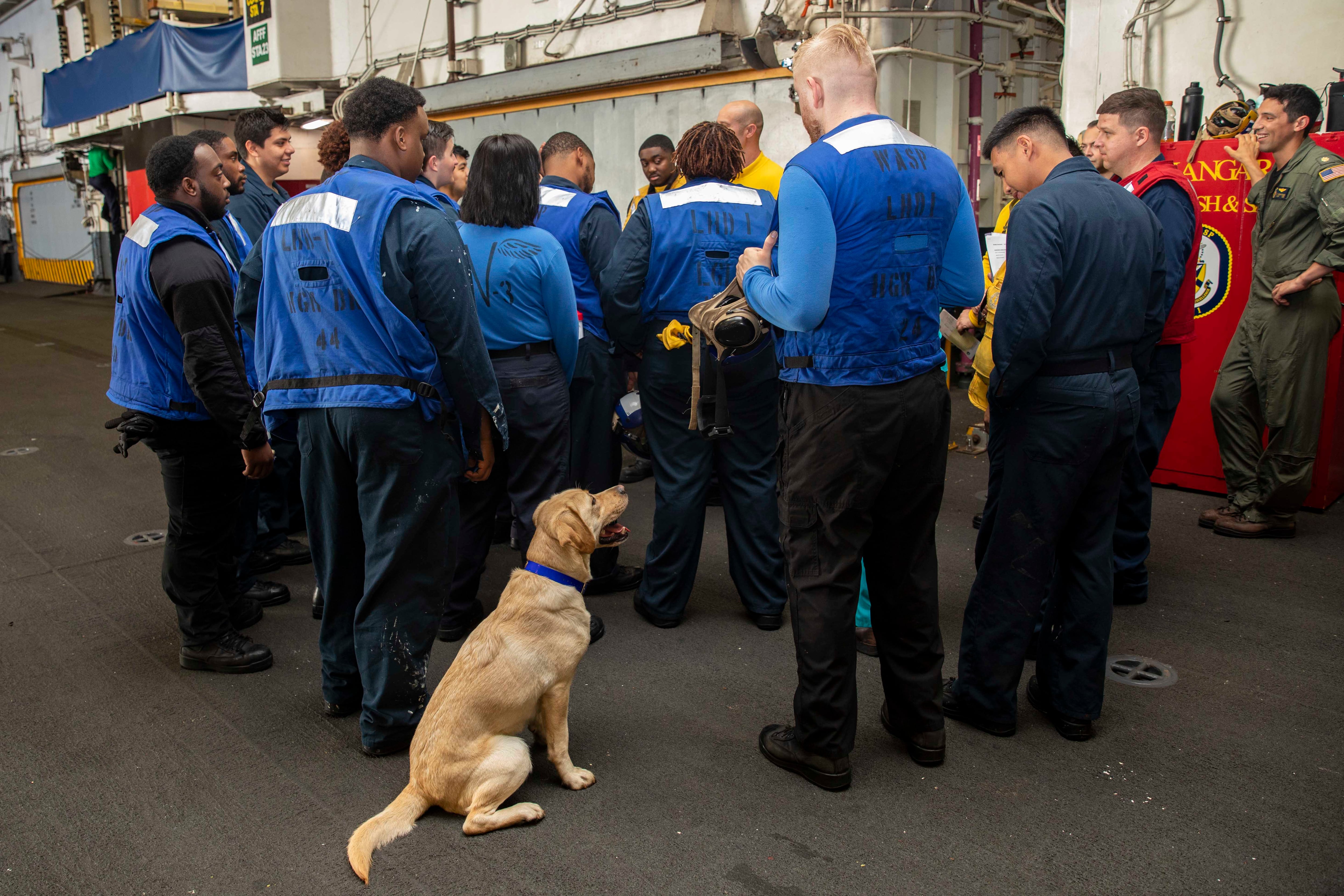
“We match each dog with the team they will be working with,” the group’s executive director, Brooke Corson, told Navy Times. “The dog must be able to adjust easily to the ship environment and all that will be required of them.”
Although it typically costs around $60,000 to train service dogs for veterans and law enforcement officers over the course of two years, training dogs like Sage costs between $80,000 to $100,000.
That’s because of not only the extra year of training, but also the additional medical supplies and exams necessary to ensure the safety of the dogs aboard a warship, Corson said.
“Mutts With A Mission (MWAM) provides all grooming and sanitary materials for facility dogs, but the ship must be equipped with adequate food and treats for the duration of the dog’s time onboard,” Stankus said. “The ship must have space to properly store a basic level of animal medications as well as the required canine protective gear, including paw protection, hearing protection, eye protection, and a life vest.”
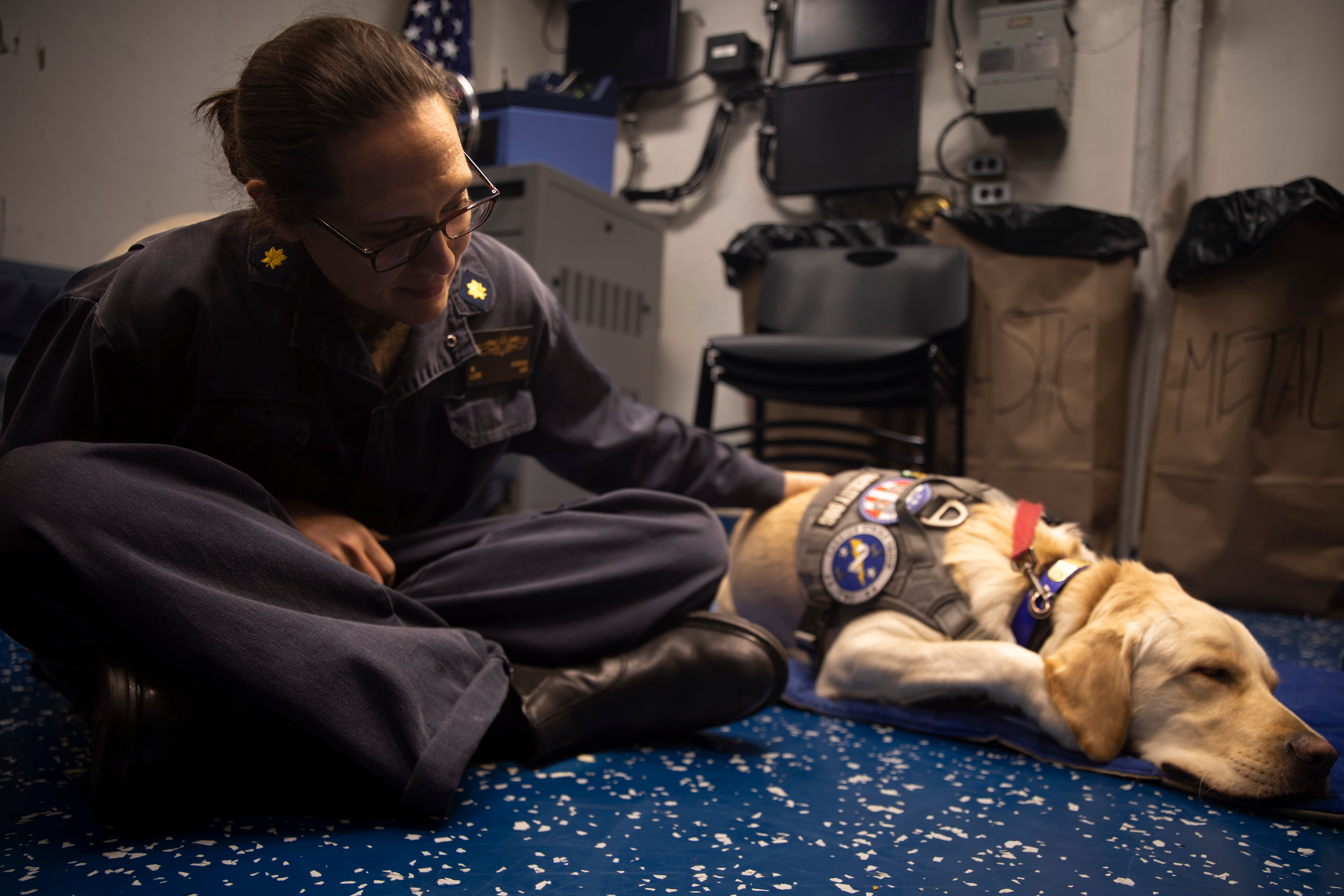
In addition to Sage’s handlers, the ship’s senior medical officers are all trained in canine first aid. Plus, the Army Veterinary Services is available for telemedicine calls if Sage encounters any problems they can’t handle.
Analysis is ongoing regarding Sage’s wellbeing post-deployment, and she is still assigned to the Ford, according to the Navy.
How deploying aboard a warship for months on end affects a dog has not been studied extensively, according to Dr. Sun Kim, a professor at Cornell University’s College of Veterinary Medicine.
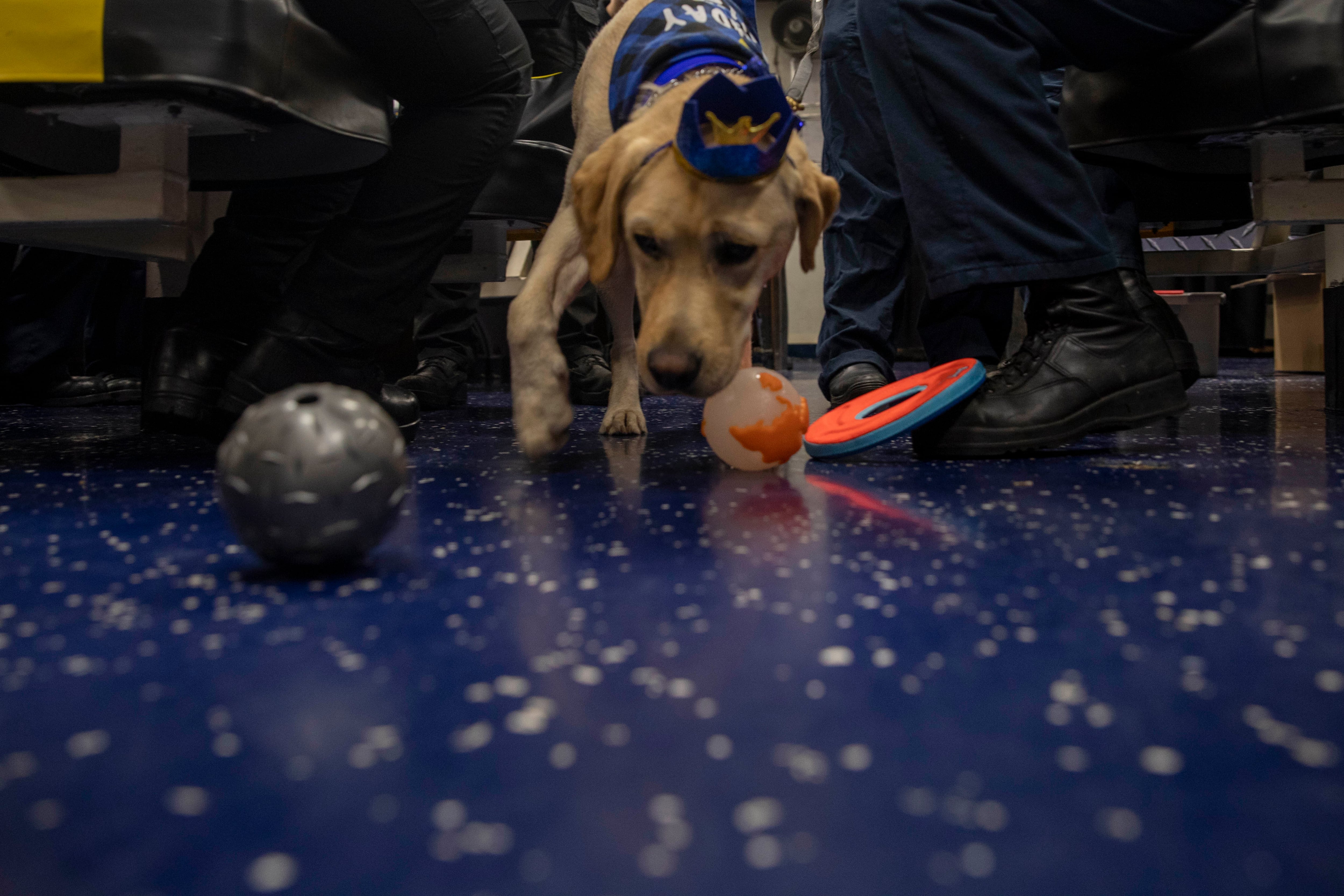
While existing studies show how taxing long deployments can be on the physical, mental and emotional help of people, Kim said it would be safe to assume that dogs would face similar risks to their wellbeing.
Kim said such dogs should be gradually acclimated to ship life and be constantly supervised by their handlers to ensure they are doing okay.
During the Ford’s deployment, Naval Air Force Atlantic collected data to identify risks, challenges, and potential policy changes associated with bringing dogs aboard warships, in order to assess the feasibility of making the program permanent.
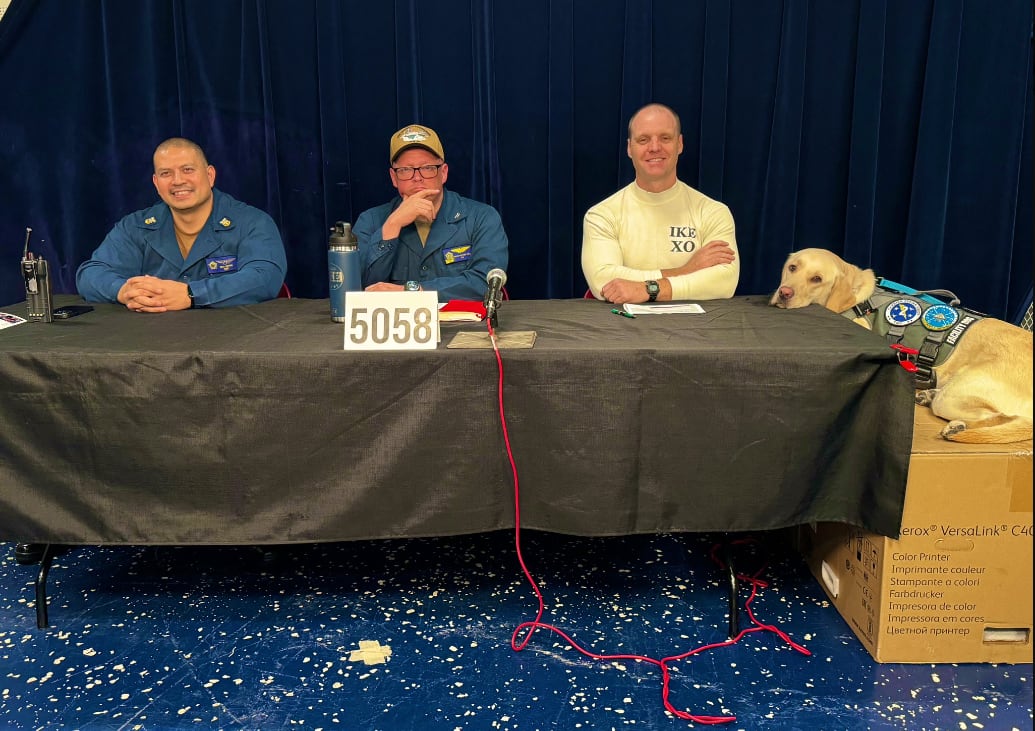
It’s unclear when a decision will be made regarding whether the pilot will become permanent, and Fleet Forces did not provide answers to Navy Times by deadline.
When it came to Ford’s deployment, Sage’s handlers documented how much Sage interacted with sailors, how she adapted to life on the carrier and collected surveys from sailors regarding Sage’s presence underway, Stankus said, but “qualitative analysis” of that data remains in progress.
The Ford returned to Naval Station Norfolk in January, following multiple deployment extensions to the eastern Mediterranean after the Palestinian militant group Hamas’ Oct. 7 attack on Israel. Altogether, the ship spent an additional 76 days at sea to help guarantee that the Israel-Hamas war didn’t escalate.
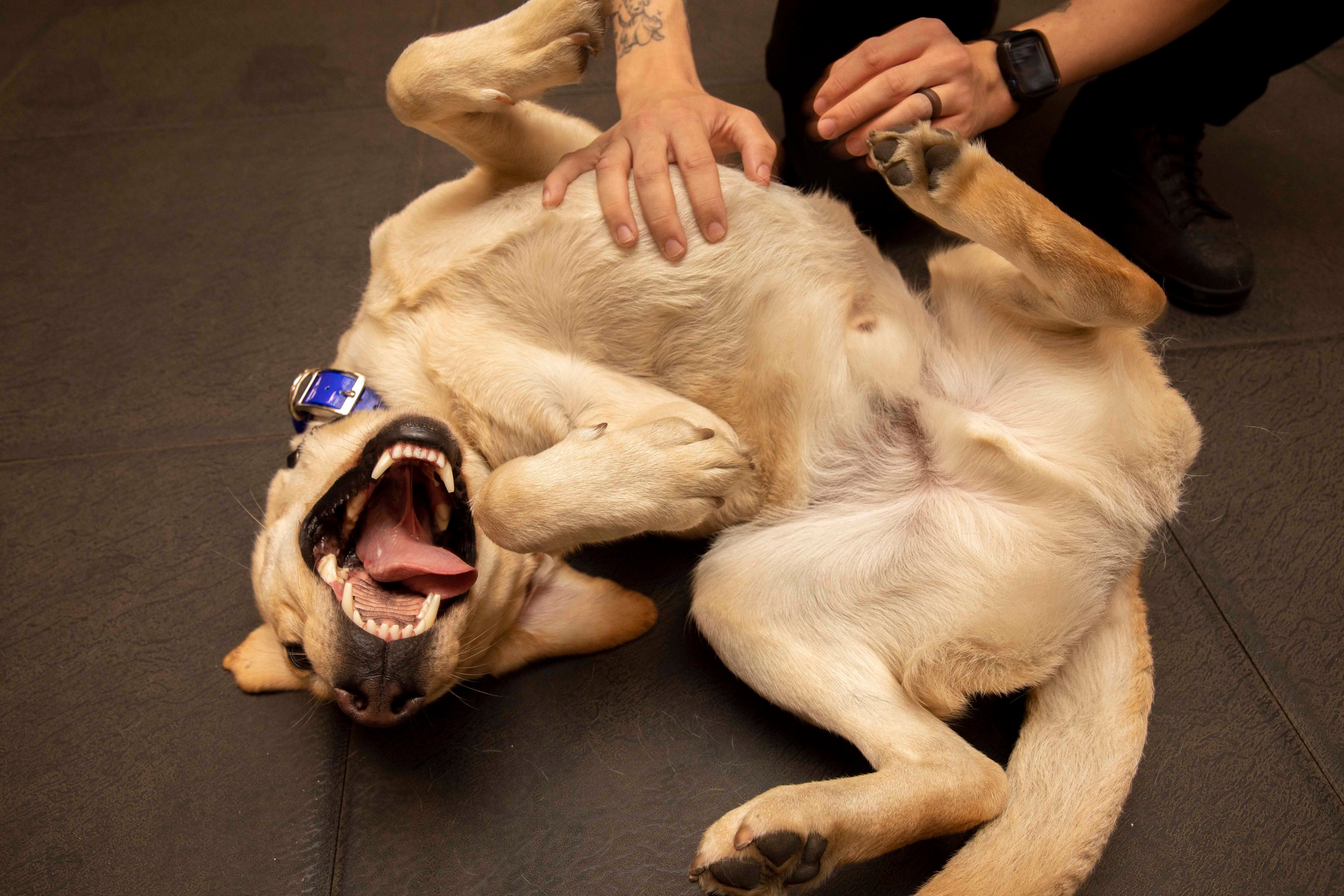
Capt. Chris Purcell, commanding officer of the amphibious assault ship Wasp, started working with Mutts with a Mission in the fall of 2022, after the ship spent two years in a dry dock undergoing maintenance, and is slated to take another of their dogs, Ike, on their next cruise.
Purcell said that Mutts with a Mission visit showed him how having such dogs around boosted the morale of his sailors.
“As I talked with these sailors, they expressed to me how much less stressed they felt after spending just a short time with the dogs, and how they were ready to get back to work,” Purcell said in a July Navy news release. “They would tell me ‘That is just want I needed today.’”

The experience prompted Purcell to investigate bringing a facility dog aboard the ship full-time. Ike, a yellow Labrador retriever, joined the ship as a facility dog in May 2023.
“We hope that what we learn with Ike, and what the USS Gerald R. Ford learns with Sage, will inform [the Department of Defense] and Navy policy to establish facility dog programs onboard all the large ships in the fleet,” Purcell said.
“In the end, we want to enable our sailors and Marines to be ‘fully ready warfighters,’ and part of that is giving them all the tools and resources we can to improve their overall morale and well-being,” he said.
Clarification: This story has been updated to note that Sage is still assigned to the aircraft carrier Gerald R. Ford, and that U.S. Fleet Forces Command is not the overseer of the program.
Correction: An earlier version of this story included a photo caption misstating the name of the dog assigned to the aircraft carrier Dwight D. Eisenhower. That dog’s name is Demo.
